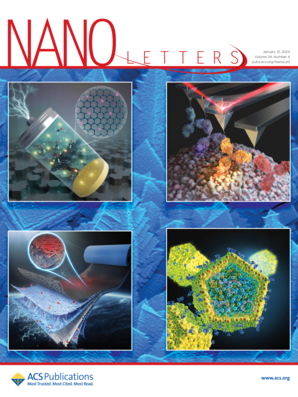Molecular–Cellular Two-Pronged Reprogramming of Inflammatory Soft-Tissue Interface with an Immunosuppressive Pure DNA Hydrogel
IF 9.6
1区 材料科学
Q1 CHEMISTRY, MULTIDISCIPLINARY
引用次数: 0
Abstract
Effective modulation of persistent inflammation is crucial for chronic wound healing. However, the interaction cascade between inflammatory factors and immune cells at the soft-tissue wound interface poses an incredible challenge for this purpose. Here, we report an immunosuppressive pure DNA hydrogel (Is-pDNAgel) that reprograms inflammatory responses from both molecular and cellular dimensions. Specifically, high-density negative charges enable Is-pDNAgel to efficiently scavenge free chemokines, mitigating neutrophil and macrophage infiltration. Moreover, its immunosuppressive domain synergistically acts on activated residual immune cells and suppresses multiple proinflammatory signaling pathways, thereby creating a positive circuit to boost anti-inflammatory efficacy. Is-pDNAgel can further facilitate migration and proliferation of endogenous endothelial cells owing to its intrinsic extracellular matrix-mimicking structure, promoting re-epithelialization and neovascularization for tissue regeneration without additional bioactive components. Such an “all-in-one” hydrogel outperforms a commercial dressing to accelerate the healing of chronic wounds in a diabetic mouse model, offering a valuable tool for developing regenerative medicine.

求助全文
约1分钟内获得全文
求助全文
来源期刊

Nano Letters
工程技术-材料科学:综合
CiteScore
16.80
自引率
2.80%
发文量
1182
审稿时长
1.4 months
期刊介绍:
Nano Letters serves as a dynamic platform for promptly disseminating original results in fundamental, applied, and emerging research across all facets of nanoscience and nanotechnology. A pivotal criterion for inclusion within Nano Letters is the convergence of at least two different areas or disciplines, ensuring a rich interdisciplinary scope. The journal is dedicated to fostering exploration in diverse areas, including:
- Experimental and theoretical findings on physical, chemical, and biological phenomena at the nanoscale
- Synthesis, characterization, and processing of organic, inorganic, polymer, and hybrid nanomaterials through physical, chemical, and biological methodologies
- Modeling and simulation of synthetic, assembly, and interaction processes
- Realization of integrated nanostructures and nano-engineered devices exhibiting advanced performance
- Applications of nanoscale materials in living and environmental systems
Nano Letters is committed to advancing and showcasing groundbreaking research that intersects various domains, fostering innovation and collaboration in the ever-evolving field of nanoscience and nanotechnology.
 求助内容:
求助内容: 应助结果提醒方式:
应助结果提醒方式:


